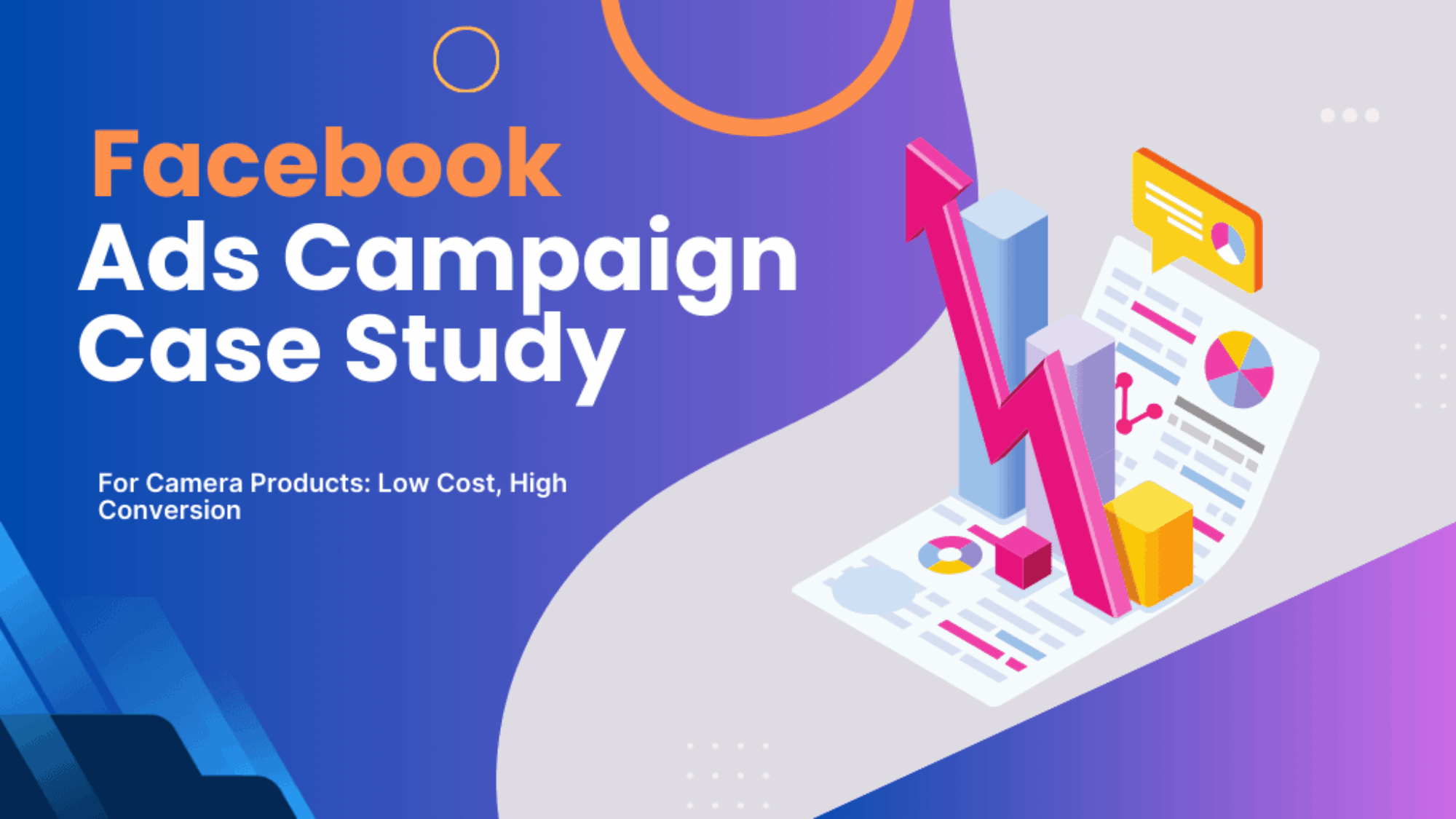A camera retailer (online/offline) ran multiple Facebook advertising campaigns to promote various camera sales and special offers. The primary objective was to drive more conversations through Facebook Messenger, thereby generating leads and inquiries for camera purchases.
Campaign Goal
- Objective: “Messages” campaign objective (i.e., optimizing for conversations started).
- Key Metrics:
- Messaging Conversations Started (the number of new chats initiated)
- Cost per Messaging Conversation
- Overall Spend
- Reach and Impressions (secondary indicators of campaign visibility)
1. Campaign Overview & Timeline
We run several campaigns. Here’s a summarized breakdown of the campaigns:
📈 January 2024 Camera Message Campaign
- Results (Conversations): ~ 362
- Reach: ~ 42,121
- Impressions: ~ 80,693
- Cost per Result (Conversation): $0.14
- Amount Spent: $50.00

📈 February 2024 Camera Message Campaign
- Results (Conversations): ~ 750
- Reach: ~ 91,814
- Impressions: ~ 193,696
- Cost per Result (Conversation): $0.16
- Amount Spent: $122.00

📈 March 2024 Camera Message Campaign
- Results (Conversations): ~ 775
- Reach: ~ 86,829
- Impressions: ~ 173,063
- Cost per Result (Conversation): $0.15
- Amount Spent:$120.00

📈 April, 2025 Camera Message Campaign
- Results (Conversations): ~ 571
- Reach: ~ 58,744
- Impressions: ~ 89,914
- Cost per Result (Conversation): $0.11
- Amount Spent: $63.99

📈 April 2025 Camera Message Campaign
- Results (Conversations): ~ 547
- Reach: ~ 54,210
- Impressions: ~ 88,007
- Cost per Result (Conversation): $0.13
- Amount Spent: $71.58

2. Strategy & Targeting
Messaging Objective
Every campaign utilized the Facebook “Messages” objective. This approach suits high-consideration products like cameras, enabling real-time responses to customer inquiries.
Audience Targeting
- Interest-Based Targeting: Focused on photography, DSLR cameras, and well-known camera brands.
- Location-Based Targeting: Limited to shipping zones or retail locations.
- Demographics: Primarily 18–55+, likely skewed toward hobbyists and professionals.
Ad Creatives & Messaging
- Visuals: Eye-catching images of cameras, banners showcasing offers or limited stock.
- Copy: Short and urgent copy highlighting discounts or limited-time deals.
- CTA: Clear “Send Message” call-to-action in every ad creative.
Budget & Bid Strategy
- Budgets ranged from $50 to $122 per campaign.
- Most used Ad Set Budget and Lowest Cost bid strategy to maximize conversations within budget.
3. Results & Analysis
3.1 Key Performance Metrics
- Conversations Started:
Ranged from ~547 to ~775 monthly, demonstrating consistent engagement. - Cost per Conversation:
Averaged $0.11 to $0.16, well below typical industry benchmarks for direct engagement. - Reach & Impressions:
Reach ranged from ~42,000 to ~92,000, with impressions reaching up to ~194,000, indicating strong ad visibility and recurring exposure. - Spend:
Monthly campaign spend ranged from $50 to $122, making these efforts efficient and scalable for a retailer-focused business model.
3.2 Observations
- Best Performing Campaign:
The April 2025 campaign had the lowest cost per conversation at $0.11, suggesting improved targeting, offer relevance, or better ad creative. - Audience Saturation:
Slight performance variations month to month could be due to overlapping audiences or diminishing ad freshness. Future segmentation or exclusion lists may be beneficial. - Offer Timing:
Campaigns tied to clear dates and strong promotional urgency (e.g., “March Camera Sale”) tended to perform better, underscoring the value of event-based advertising. - Messenger Strategy:
The “Messages” objective successfully engaged potential buyers in real-time, especially valuable for higher-priced items requiring more consideration.
4. Lessons Learned
- Creative Optimization:
Highlighting strong offers like “Save up to 30%” boosts engagement. Testing visuals, headlines, and CTA copy can further reduce the cost per conversation. - Seasonal/Thematic Relevance:
Time-bound sales (e.g., month-end offers) performed better. Tie future campaigns to holidays, festivals, or new product launches. - Targeting Refinement:
Analyze best-performing audience segments and replicate success. Use exclusion strategies to avoid overexposure to the same users. - Messenger Automation:
Deploy Messenger bots or set up quick-reply templates to handle incoming conversations more efficiently and improve user experience. - Scalable Budgeting:
Campaigns with < $0.15 cost per conversation can be gradually scaled. Monitor returns to ensure performance doesn’t degrade as spend increases.
5. Recommendations for Future Campaigns
- A/B Testing:
Continuously test variations in ad creatives, offers, and targeting to refine performance. - Retargeting Strategy:
Re-engage website visitors or Facebook engagers who didn’t convert—this audience is often more cost-effective. - Leverage Lookalike Audiences:
Use CRM data, page engagers, or past buyers to build high-conversion lookalike audiences. - Optimize Page Experience:
Ensure the Facebook page provides quick access to pricing, specs, FAQs, and store policies. This reduces friction once users click “Send Message.” - Track Post-Conversation Outcomes:
Go beyond Messenger metrics—track actual conversions or sales. Set up backend tracking to calculate cost per acquisition (CPA) for complete ROI analysis.
Conclusion
These Facebook Messenger campaigns proved to be a cost-effective lead generation channel, averaging $0.11–$0.16 per conversation across campaigns. By leveraging timely offers, clear messaging, and targeted audiences, the retailer successfully drove traffic into Messenger and generated relevant leads.
Moving forward, the key to ongoing success will be continuous testing, audience expansion, and automation of conversation flows, along with improved analytics on how those Messenger conversations convert into sales.



Add a Comment